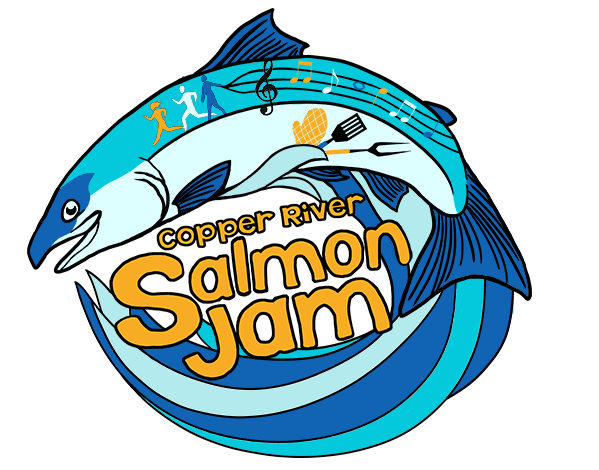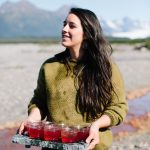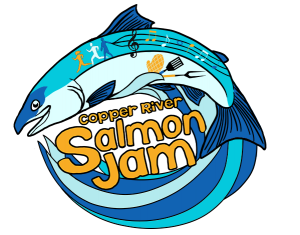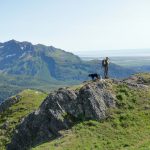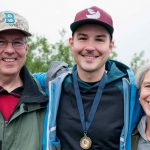Forage and Feast: Taste Cordova’s Flair for Flavor
The Copper River Delta is famous for her wilderness and abundance of wild foods. Many of us live in cities and dream of that “perfect garden”. Sometimes we forget that the plants growing naturally around us are the best source of food and medicine. As I was growing up on the Copper River Delta, my family taught me about the healing powers of many local plants growing close to home. For example, there are medicinal properties in cottonwood buds and decongestive properties in spruce; and these are both easily found without venturing far into the wilderness. Growing up, my family used many plants for medicine and as a young adult, my interest in plants blossomed. I learned that I come from a long line of wise women who practice plant medicine. When we look back through history, we find that humans have always depended on plants of all kinds for medicine, food, and shelter.
Cordova’s abundance of natural flora can be harvested for both medicinal and culinary purposes. Edible plants – dandelions, nettles, fireweed, beach greens, wild chamomile, red clover and many more – are especially good during the month of July. Many of these plants can be eaten raw and make perfect snacks on hikes or camping trips. Foraging and hiking go hand in hand. However, it is important to know what you are gathering and to be considerate of others and the land by practicing sustainable harvesting techniques. There are a plethora of books available on the subject of identifying, picking, and cooking with wild foods. Two of my favorites are Discovering Wild Plants by Janice Schofield and The Boreal Herbal by Beverley Gray. They are both fantastic reads and have information about identification as well as historical, medicinal, gastronomic, and cosmetic uses.
If you visit Cordova for Salmon Jam, you will not be disappointed with the treats waiting for you just off the trail and even the side of the road. Wormwood is a herb that is great to use in place of rosemary or a great flavor to add to cocktails; and it grows in abundance just off the Copper River Highway. Keep an eye out for that if you’re running in the Alaska Salmon Runs. Wild chamomile or pineappleweed flourishes in disturbed places, so check around festival grounds during the live music and kids’ events, or along roadsides for the aromatic fern-like weeds that are easy to harvest and great to add to tea or lemonade. If we are lucky, red clover and dandelions may be blossoming and those beautiful pink and yellow flowers are great to add to salads, sandwiches or used in baked goods. Fireweed will be in the midst of its growth; the leaves are excellent added to stir-fry with other wild greens or alone with butter and garlic.
Today we are fortunate enough to be able to use this knowledge in the open again, as it was not long ago that people were shamed for the use of plants. People kept the tradition alive by practicing in secret. It is essential that we say “thank you” to all our ancestors who kept harvesting plants and passing on their knowledge despite colonization and assimilation. We must also say “thank you” to the plants as we are taught to love, respect, and be kind to the living beings that we harvest, and always forage with good intentions.
Not only can you try your hand at harvesting some of these local delicacies, but you can try a wide variety of them at Salmon Jam’s Taste of Cordova! Here’s one of my favorite wild food beverage concoctions:
Pineapple Weed Lemonade
7 lemons
3 cups pineapple weed flowers
1 quart water
2 cups honey
Juice 7 lemons into a pitcher. In a medium pot mix the pineapple weed flowers, honey and two cups of water. Bring to a boil and remove from heat. Strain. Pour into a pitcher and add the rest of the water. Keep in the fridge until chilled. Serve and enjoy! For an adults only variation try pairing with champagne.
Raven Madison is a life-long resident of Cordova, Alaska. She is a recent graduate of University of Alaska Fairbanks where she studied Rural Development, Natural Resource Management and Alaska Native Studies. She is inspired by the land and loves to participate in subsistence activities. Most of the time you’ll find her in the woods or by the sea. Follow her on Instagram as @raven.alayna
Photo credit Gabriel Rodriguez, Photographer for Kitchen Unnecessary. Follow them on YouTube and Instagram.
